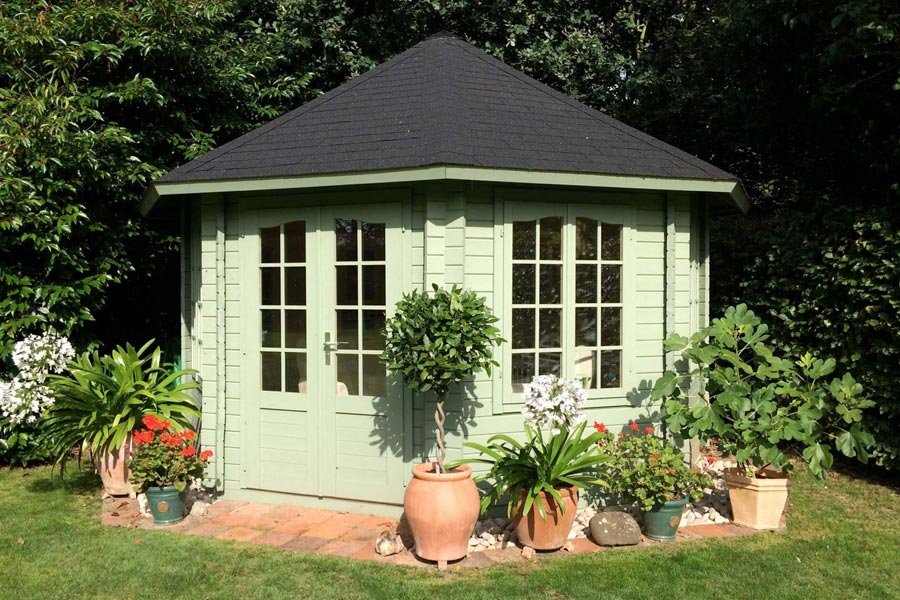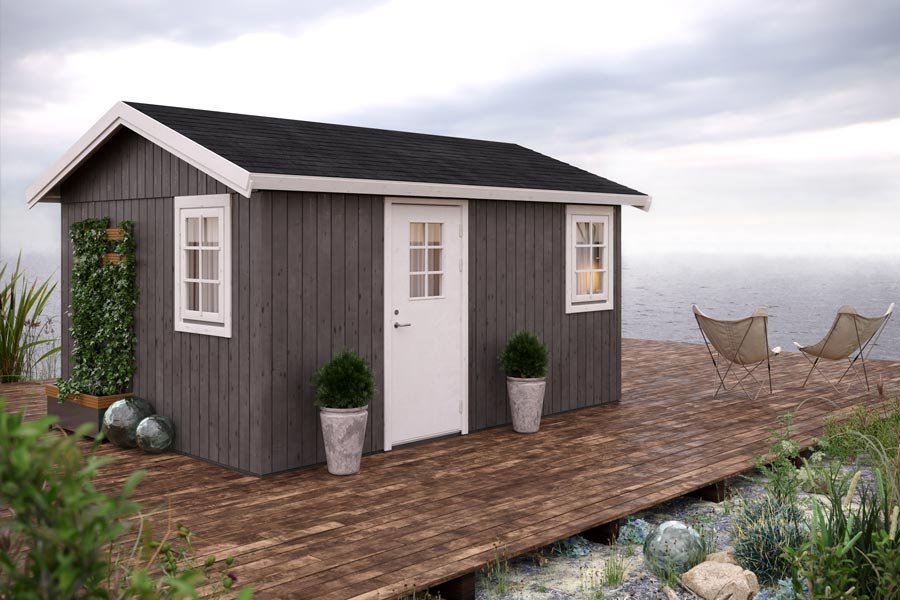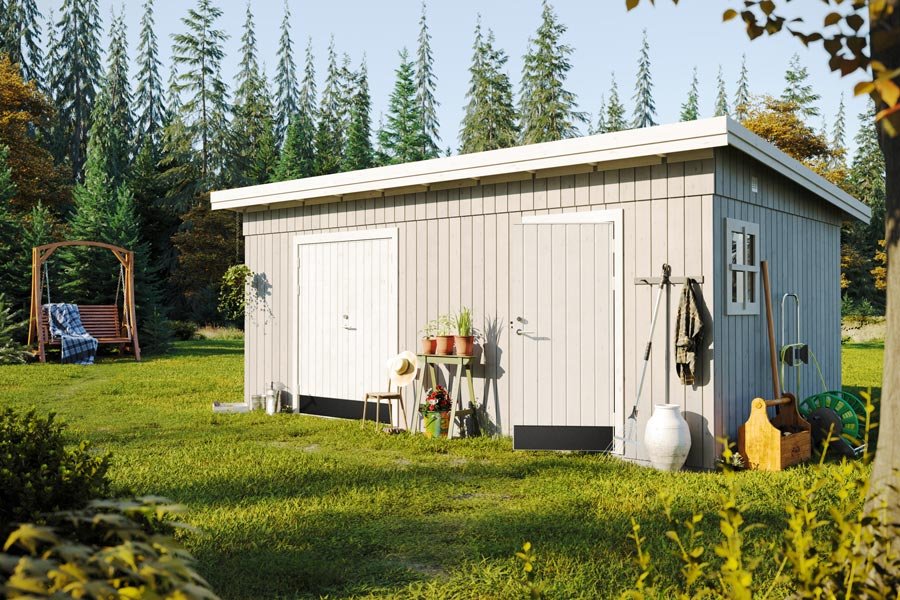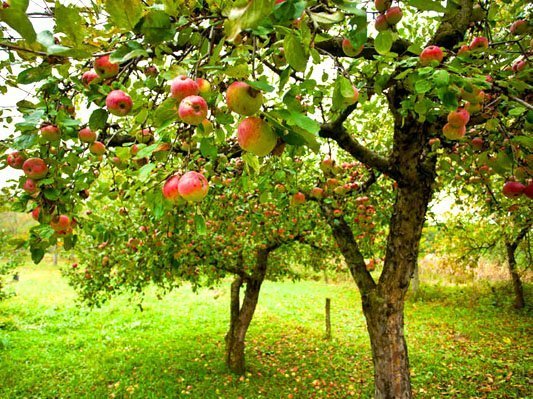Most of us in the real world want to keep the price down when we buy a garden building. And because many timber garden buildings look more or less similar in website pictures, it’s tempting to think they’ll be similar once they’re built. But it’s important not to confuse a short term saving with long term good value.
Why are cheap garden buildings false economy?
Once you take delivery of a garden building, the difference between good and poor quality quickly becomes apparent. And as the months and years pass, that difference becomes even more conspicuous. An apparent bargain can quickly fall prey to leaks, rot and warping. Shaving too much off the price of your summer house or garden log cabin may reduce its durability and usability , and in time, repair costs and heating bills will all add up.
Why is timber wall thickness important in a garden building?
Log thickness is a major determinant of quality, insulation and robustness, so you should avoid purchasing any timber building with walls thinner than 16mm (although 18mm is better, and 28mm or higher is recommended if you intend to use the building through spring, summer and autumn). Thinner timbers rot, warp, distort and appear to age much faster than thicker timber walls too. You may initially save money on a thin walled summer house, but it’s unlikely to last long, and will require much more in the way of upkeep, maintenance and repairs.
Wood density is also a mark of quality, and denser woods therefore cost more, but last longer. Trees grown slowly in cold climates develop a closer, denser grain than trees in warmer Mediterranean countries. By seeking out timber grown near the Arctic circle – in countries such as Estonia (where all GardenLife’s timber is sourced) – you should end up with a much warmer garden building, and a stronger, longer-lasting one.
Low-quality timber is more likely to suffer from distortion over time – perhaps because corners have been cut during the drying process. As a result, you may find that walls or ceilings begin to bow or sag; door and window frames twist; or doors and windows become increasingly difficult to open or shut. Such problems can be avoided by using slow-grown, kiln-dried timber.
How can I check the quality of the timber in a garden building?
To check the density of the timber and general sturdiness of a garden building, Which magazine recommends that you stand inside it, jump in the centre of the floor, and push against the side and roof panels: “You should feel firm resistance rather than flexing”.
Once you’ve recovered your breath from the jumping, you could carry out a second test: if you look up at the roof purlins (the horizontal beams which support the roof) there should ideally be thicker purlins running from apex to apex. This should make the building more solid, durable and resistant to the British weather.
Why should I pay extra for a pressure-treated base?
Any untreated timber that comes into contact with the ground is vulnerable to rot and decay caused by moisture seeping into the wood. GardenLife garden buildings use pressure-treated wood for the foundation joists and base, lengthening the life of the building. You can save money buying a cheap summer house or log cabin without a floor, but the building will have a far shorter lifespan as a consequence.
Another vulnerable area of any timber garden building are door frames, which can take a battering from rain and weather. So too can the support posts on timber gazebos and carports. Using laminated timber for door frames and support posts can prevent problems with warping, twisting and rot. It may add a few pounds to the price, but will assure you a more attractive and durable structure that is likely to last much longer and require far less maintenance and upkeep.
Why should I opt for a garden building with a roof overhang?
In a rainy climate, leaks are the bane of many a shed-owner’s life – they can come from anywhere: through the roof; via warped door frames or windows; from water seeping through ill-fitting timber. The best way to avoid leaks is to seek out better-quality timber and construction. For example, laminated door frames are less likely to warp. Another tip is to look at the roof overhang – well-built garden buildings, especially log cabins, will have an overhang of at least 5cm or more. Smaller than this and rainwater will simply run down the sides of the walls, making it more likely to gain entry inside! Again, you can save money and buy a cheap building with no overhang, but the walls will require far more maintenance to ensure they do not rot.
Why should I consider garden building security?
If you use a garden room or workshop to store garden equipment, tools, bikes and the like, it’s likely you have hundreds of pound worth of kit in there – the average garden shed contents are worth around £1,000 (a lot more than people often think). A flimsy, insecure garden building is an open invitation to the light-fingered, and also a false economy. Better to look for a building with a combination of robust wood; well fitting door and windows; and sturdy cylinder locks – all of which are standard on GardenLife buildings. The extra cost will probably be less than the excess on an insurance policy, and certainly less than the cost of replacing stolen equipment. It will also help protect against the stress of dealing with a break-in.
Buy a cheap garden building or invest in affordable quality?
So, if you are browsing “bargains” online and think you see a high quality garden building that is also cheap, you now know which pitfalls to watch out for (especially if you expect long term value from a low price purchase). As with everything in life, you get what you pay for, so if you would like to enjoy your summer house, garden room, log cabin, garage or workshop for decades to come, consider the above pointers before making your purchase.
















